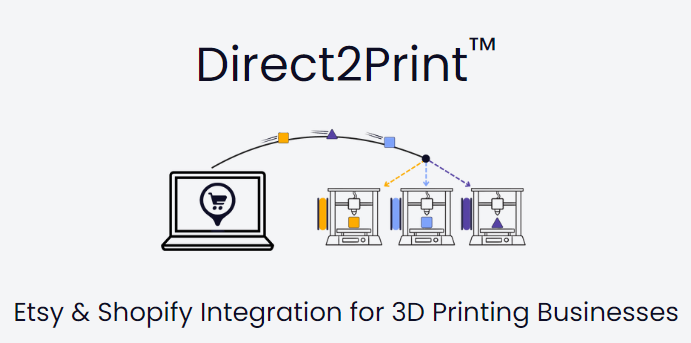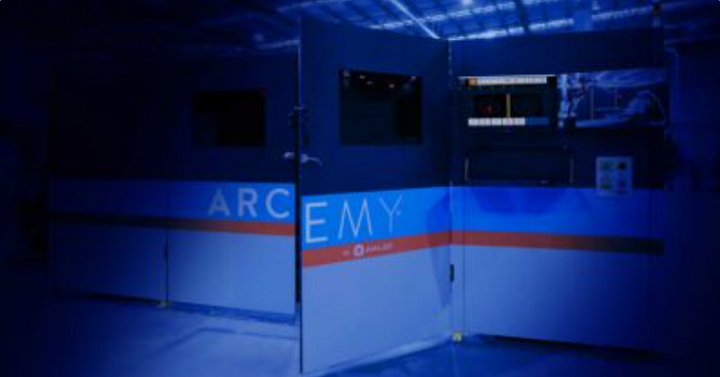We’re starting 3D Printing News Briefs today with an announcement that a 3D printed rocket motor by Skyroot Aerospace had a successful test-fire. Continuing with aerospace news, Burloak Technologies received approval from Boeing to inspect 3D printed aluminum alloy components. Moving on to business, 3DQue has introduced an order management system that streamlines the process, and AML3D signed a value-added reseller agreement with Phillips Corporation. Solukon delivered a perfect-fit post-processing system for SLM Solutions’ NXG XII 600. Finally, a teenager in Colorado accused of planning school and church shootings had a manifesto, which included instructions on making 3D printed guns.
Skyroot Aerospace Test-Fires New 3D Printed Rocket Engine
Indian space tech startup Skyroot Aerospace announced that it has successfully test-fired the Dhawan II, its latest 3D printed cryogenic rocket engine. In comparison to common rocket engine technologies, the Dhawan II uses a blend of green-burning propellants—liquid natural gas (LNG) and liquid oxygen (LoX)—that are considered environmentally friendly. According to the startup, fully cryogenic engines are preferred for a rocket’s upper stages due to their enhanced thrust, which leads to better payload capacities. As such, the Dhawan II engine will be used in the upper stage of the company’s Vikram II rocket, which is set to launch later this year. During its most recent test-firing, the 3D printed Dhawan II achieved a peak thrust of 3.kN and lasted for over 200 seconds
“This is a major milestone for our cryogenic propulsion program, which will enhance the payload capacity of Vikram-series of space launch vehicles making them more modular so as to meet wider customers’ requirements,” stated Naga Bhareth Daka, Co-Founder and COO of Skyroot Aerospace.
Boeing Approves Burloak to Inspect AM Aluminum Alloy Components
In 2021, Burloak Technologies Inc., a division of Samuel, Son & Co., Limited, was approved to 3D print aluminum AlSi10Mg components to the Boeing BAC5673 specification. Now, it’s announced that Boeing has approved it to use X-Ray Computed Tomography (CT) to inspect 3D printed aluminum alloy components to its BSS7046 specification. This qualification is specific to Boeing, but Burloak has included CT in its ISO17025 scope, which makes it commercially available to any industry. Boeing completed a “rigorous evaluation” of Burloak’s CT system, which features a 180kV nanofocus tube and a 300kV microfocus, and the qualification process included an examination of the operators’ technical proficiency, in addition to associated documentation and laboratory processes. Now that it’s received the qualification, Burloak Technologies can continue to expand the scope of its CT capabilities to go past aluminum alloys and include titanium alloys.
“This announcement is indicative of our growing ability to support Boeing with leading-edge, high-quality manufacturing solutions. As an additive manufacturing company, we are committed to delivering only high caliber, reliable products. CT scanning is an indispensable tool that allows us to inspect and analyze 3D printed components with unparalleled accuracy, ensuring that our customers receive products that are of the utmost quality,” said Jason Ball, Vice President & General Manager of Burloak Technologies.
3DQue Launches Automated Ordering Solution for 3D Print Farms
3DQue Systems Inc., which is on a mission to free 3D printer operators from the repetitive and mundane tasks involved with running a 3D print farm, has announced its latest automated solution: Direct2Print, which eliminates manual order management and tracking to offer overwhelmed print farms some much needed relief. As soon as a customer places an order at an online store, the details are imported into Direct2Print, and the proper G-code files are automatically added to the print queue. Each print in that order is matched with the next available printer that meets all its requirements, like material type, bed size, and filament color. With the AutoFarm3D/Direct2Print integration, operators are provided with all the necessary information through 24/7 remote monitoring, AI failure detection, and automatic part removal. Finally, the operator is notified once the order is complete, and all they have to do is mark it completed once everything has been shipped to the customer.
“We designed Direct2Print to work for print farms of all sizes. Whether you have a small Etsy shop or a large-scale operation, Direct2Print lets you stay on top of orders with no need for specialized technical knowledge or training,” said 3DQue CEO Steph Sharp.
You can join the Direct2Print waitlist here.
AML3D Signs Reseller Agreement with Phillips Corporation
AML3D, OEM of the ARCEMY industrial metal 3D printing systems, has signed a value-added reseller (VAR) agreement with Phillips Corporation to scale up its sales capability and access to the U.S. Federal Government and defense sector. The company’s U.S. sales team will work with the federal sales division of Phillips, a top service provider and manufacturing reseller partner to the government, to co-sell its ARCEMY printers into all defense branches in order to speed up the development of a U.S. ARCEMY sales pipeline. The VAR agreement, which is non-exclusive in sectors outside the government, will run for 18 months, but is renewable after this first term, and while AML3D won’t pay a distribution fee, Phillips will get a margin based on the difference between the end customer sale price and the wholesale price of the ARCEMY. This agreement will bring both companies into an exclusive resale agreement for the U.S. Federal Government sector.
“I am excited by this important announcement, particularly against the backdrop of the recently announced AUKUS defence partnership. Phillips is the perfect partner to help rapidly scale up ARCEMY ® system sales through their federal sales division across the United States Federal Government, including all branches of the US Defence forces,” said AML3D CEO Ryan Millar. “Phillips’ deeply entrenched relationships as a long-standing and trusted partner and supplier of manufacturing solutions will allow AML3D immediate access to the US defence sector at scale. This is an incredible opportunity to expand our reach and sales presence through a dual-track strategy comprising our direct sales team and our partner Phillips’ federal sales team. Driving adoption of our ARCEMY technology across the US Navy, Airforce, and Army is a key scale-up objective for AML3D. The agreement with Phillips builds on AML3D’s recent success securing a contract to supply an ARCEMY ® ‘X-Edition 6700’ system to support the US Navy’s submarine industrial base. I look forward to providing further updates as we deepen our presence and partnerships in the US.”
Solukon Creates Perfect-Fit Post-Processing System for SLM Solutions
SLM Solutions launched its 12-laser NXG XII 600 3D printer at Formnext Connect in 2020, and it’s used to print large, heavy metal parts, which puts a lot of demand on industrial depowdering systems. Solukon‘s SFM-AT1000-S, also launched in 2020, has a reinforced body and higher torque, which allows it to easily and safely depowder large parts that weigh up to 800 kg. Now, the two companies have collaborated to optimize the SFM-AT1000-S system, giving it features specific to the NXG XII 600. The depowdering system is based on Solukon’s standard but unique SPR Smart Powder Recuperation Technology, and also features its Digital-Factory-Tool for process monitoring and data recording and SPR-Pathfinder® software. But to perfectly fit the system to the NXG XII 600, Solukon added a short swivel arm to reach the best center of gravity balance position. Another new optimization is a pneumatic front-top-loading feature, which makes it easier to load, handle, and unload parts. SLM Solutions now has the optimized SFM-AT1000-S in its facility, and Solukon is launching this special version at RAPID + TCT in Chicago this week; see it for yourself at Booth #1820.
“The NXG XII 600 from SLM Solutions has set the entire large printer market in motion. We are happy that we can now offer the numerous NXG XII 600 users a customized depowdering system as well,” said Andreas Hartmann, Solukon’s CEO/CTO. “Even larger parts measuring 1,500 millimeters, produced on an NXG XII 600E for example, or more on the Z-axis will inevitably require Solukon automated depowdering solutions. We are in ongoing discussion with manufacturers to ensure that we can always provide the right system. The SFM-AT1000-S for NXG XII 600 will not be the last Solukon system for the large-format printers.”
Colorado Teen’s Manifesto Included 3D Printed Gun Instructions

William Whitworth, who identifies as a female named Lilly, is accused of planning school shootings in Colorado. (School photo is a screengrab from CBS Colorado; the mugshot is from the District Attorney’s Office in the 18th Judicial District in Colorado)
According to Colorado authorities, 19-year-old Lilly Whitworth, accused of planning shootings at churches and schools, had a manifesto with several lists, including potential targets and instructions on how to 3D print a gun. The Elbert County Sheriff’s Office responded to a disturbance call by Whitworth’s sister, who told deputies that she had anger issues and threatened to shoot up a school. Whitworth, who is now facing attempted murder and other charges, allegedly told police that she had been planning the shooting for a couple of months, and that she had begun a manifesto.
Deputies found a dry-erase board with what appeared to be a labeled floor plan of a school, as well as notebooks with more floor plans, a list of what appeared to be potential targets, and a drawing of a clock to use as a detonation device. After Whitworth was booked into the Elbert County Jail, police found a leather-bound book with more locations and and names, information about constructing improvised explosive devices, and a list of firearms and how to 3D print them. Last summer, we found that 3D printed gun arrests had tripled in less than two years. The Biden Administration has been cracking down on ghost guns due to an increasing threat of mass shootings and potential for crimes committed with 3D printed firearms, and this certainly isn’t the first time we’ve heard about suspected shooters investigating the use of 3D printing to make weapons. But, while 3D printed weapons do bring up some big security and legal issues, many believe it is unlikely that 3D printed guns pose a major risk.
Subscribe to Our Email Newsletter
Stay up-to-date on all the latest news from the 3D printing industry and receive information and offers from third party vendors.
Print Services
Upload your 3D Models and get them printed quickly and efficiently.
You May Also Like
Nikon SLM Solutions Sells SLM 500 to Primary Weapon Systems to Expand Suppressor Production
Primary Weapons Systems (PWS) is a Boise, Idaho-based manufacturer of suppressors, firearms, and related components. A subsidiary of Vigilant Gear and a sister company to aftermarket Glock slide manufacturer Lone...
3DPOD 261: Tooling and Cooling for AM with Jason Murphy, NXC MFG
Jason Murphy´s NXC MFG (Next Chapter Manufacturing) is not a generalist service; instead, the company specializes in making tooling. Using LPBF and binder jet, the company produces some of the...
HP and Firestorm Labs Form Partnership to Use Multi Jet Fusion 3D Printers in Deployable Factories
HP Inc., maker of a range of additive manufacturing (AM) solutions including the Multi Jet Fusion (MJF) ecosystem, has announced a partnership with Firestorm Labs, a developer of containerized, deployable...
3D Printing News Briefs, July 2, 2025: Copper Alloys, Defense Manufacturing, & More
We’re starting off with metals in today’s 3D Printing News Briefs, as Farsoon has unveiled a large-scale AM solution for copper alloys, and Meltio used its wire-laser metal solution to...





































